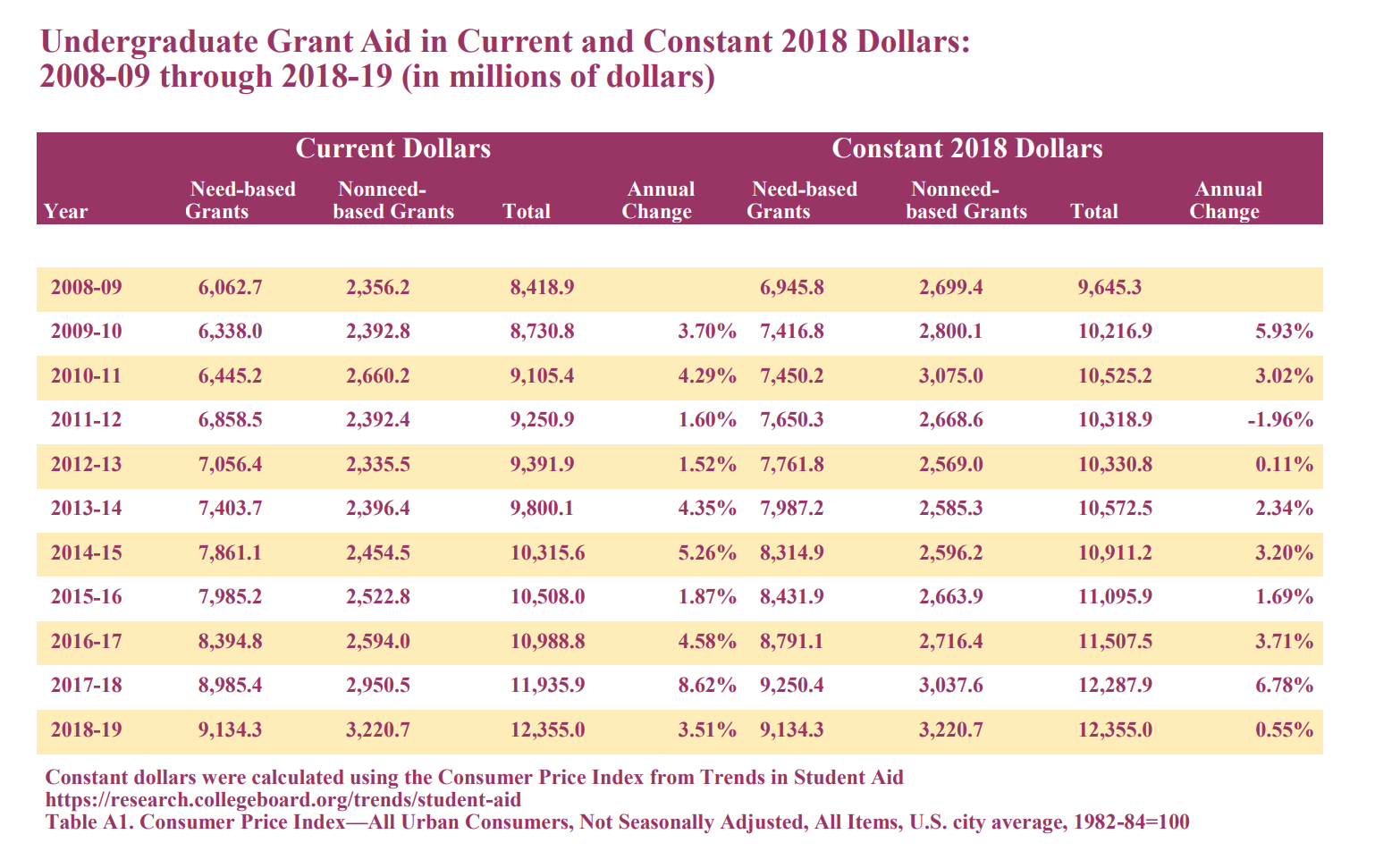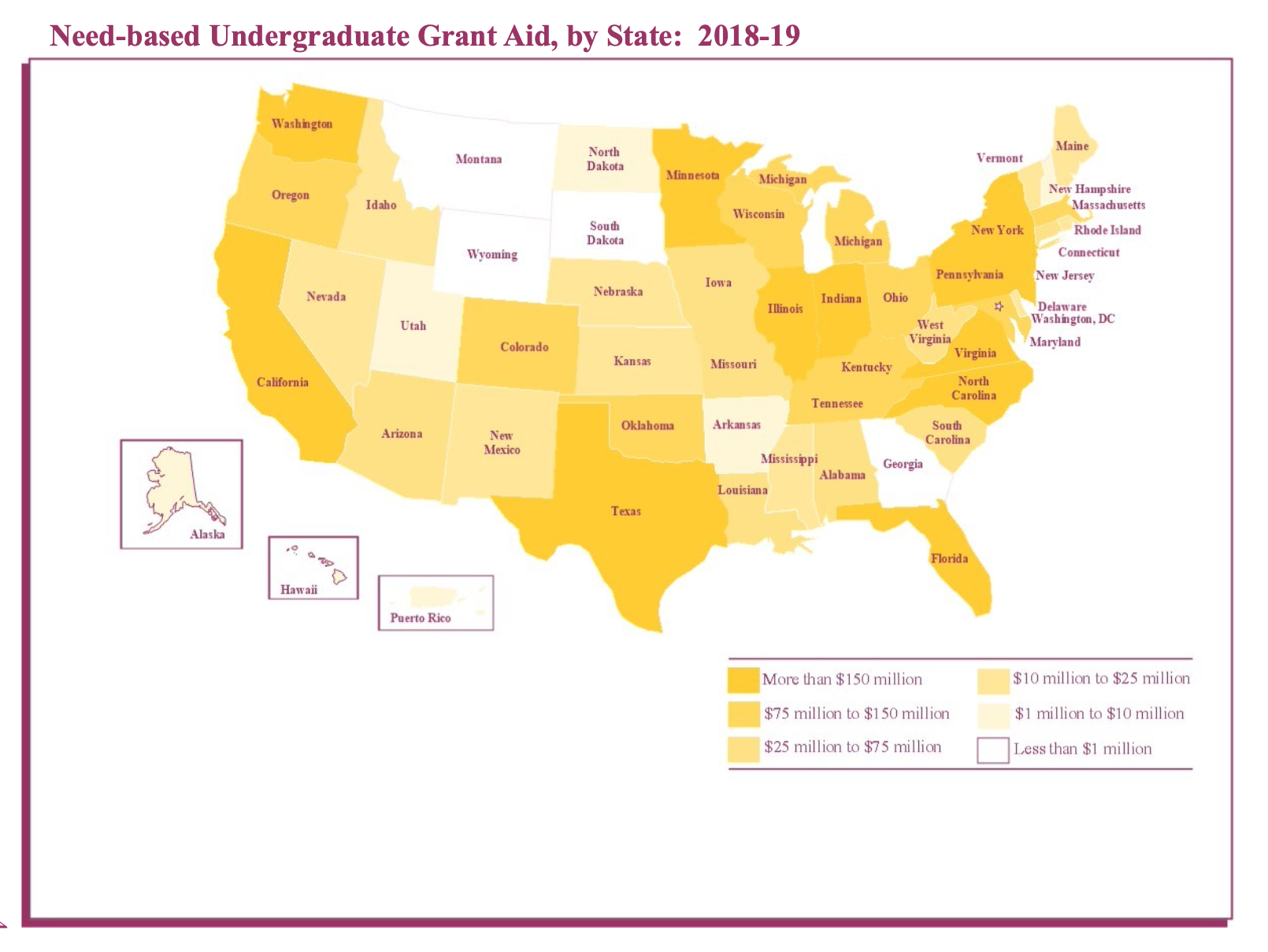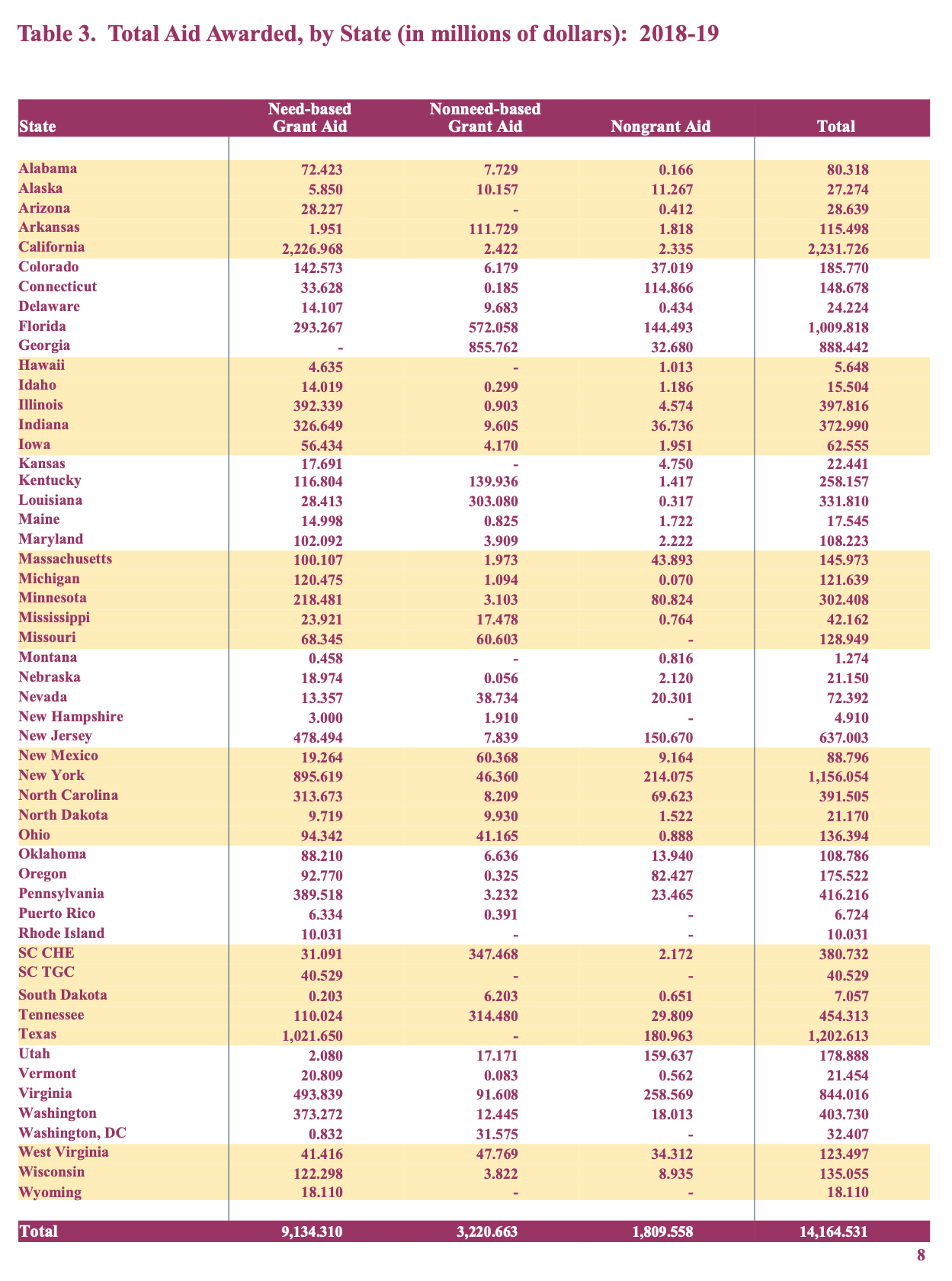You have /5 articles left.
Sign up for a free account or log in.

Manjurul via Getty Images
State grant aid continues to tick upward year after year, according to the latest Survey Report on State-Sponsored Student Financial Aid from the National Association of State Student Grant and Aid Programs.
Total undergraduate grant aid across all 50 states increased by 3.5 percent in the 2018-19 academic year to $12.4 billion -- a half-percentage-point increase from the prior year in constant 2018 dollars. The increase pales in comparison to the jump between the 2016-17 and 2017-18 academic years, when total undergraduate grant aid increased by more than 8 percent -- the largest bump in a decade.
But the smaller increase isn’t cause for concern, said Frank Ballmann, director of federal relations at NASSGAP.
“The key takeaway is this: a steady, consistent investment by states,” Ballmann said. “That’s important, because the goal isn’t just access in terms of getting students to enroll in colleges. It’s getting them through to completion, and that means that you need to have a multi-year commitment and can’t be having your grant numbers bounce around from year to year.”

This year’s report analyzed state funding data from the 2018-19 academic year. It includes survey data on state grant aid from every state except Maryland, which didn't respond to the survey. The report authors estimated data for Maryland. Ballmann describes the annual report as “a look in the rearview mirror” at state funding. Data for one academic year aren’t available until the coinciding fiscal year ends. Family income information included in this year’s report is based on the 2017 Free Application for Federal Student Aid, which pulls family tax information from 2016.
“It’s looking at a point in time when the economy was pretty strong,” Ballmann said of the recent report.
The report doesn’t take into account the effects of the pandemic. It’s likely that any impact the pandemic has on state grant aid won’t appear until data for the 2020-21 academic year are available. Family income information won’t reflect the pandemic’s effects until several years after that.
Typically, to be eligible for state grant aid, a student must live in the state and attend an institution within the same state, Ballmann said. The report examines two primary types of undergraduate aid: need-based aid, which uses family income to determine grant awards, and non-need-based aid, which is sometimes called merit aid and makes awards based on other criteria, including academic performance. All states except for Georgia and Wyoming have some aid programs with a need component, according to the report. About half of all states have some exclusively merit-based programs.
In total, 44 percent of all undergraduate grant aid dollars awarded were need-based, about 20 percent were exclusively merit-based and 36 percent had both need and merit components.
Eight states -- California, Illinois, New Jersey, New York, Pennsylvania, Texas, Virginia and Washington -- accounted for 68 percent of all undergraduate need-based grant aid. The eight states have high populations, which translates to large grant volumes, Ballmann said.
“One large-population state you might say is missing from that list is Florida, and that’s because Florida has a scholarship program that is not need-based,” he said. “Also, there’s probably a wider range of private colleges in those eight states than there are in Florida.”
Some state grant programs provide scholarship money for students to attend private colleges within the state, as well as public institutions.

Washington, D.C., provided the most grant aid as a percentage of total funding for higher education -- 37 percent of the district’s higher education dollars went to grant aid. Georgia, Louisiana, South Carolina and Virginia also topped that list, with more than 20 percent of the states' higher education budgets going to grant aid. On the other end of the spectrum, Hawaii, Kansas, Montana, Nebraska and Utah allocated 2.5 percent of state dollars or less to grant aid, according to the report.
Georgia, Louisiana, South Carolina, Tennessee and Virginia lead the pack in state grant aid per estimated population of 18- to 24-year-olds. Georgia, Louisiana, New Jersey, South Carolina and Tennessee doled out the most undergraduate grant aid per full-time equivalent undergraduate enrollment, each with more than $1,600 per FTE undergraduate.
These metrics aren’t a clear indicator of how supportive states are of higher education, or how supportive they are of college students. Each state has to decide how much money it gives directly to students to take where they choose and how much money to give institutions to lower tuition for all, Ballmann said.
“It’s sort of a balancing act,” he said. “It also depends on what you need to do to pass legislation in your state to get things done.”
State grant aid is often construed as a politically partisan issue, wherein Democrats favor need-based aid and Republicans favor tighter state spending, but Republican-led states have often pioneered successful student aid programs, Ballmann said.
“One thing to keep in mind is that a lot of the major innovations in student financial aid in higher education have actually originated in so-called red states, where Republican governors with Republican legislatures initiated groundbreaking programs,” he said.
Most people think California was the first state to provide need-based aid students who are not U.S. citizens, Ballmann said.
“In fact, it was Texas, with Governor Rick Perry,” he said. “Tennessee, most people know, was the first state to provide a free college program. Once again, that was Governor Bill Haslam, with a Republican Legislature that passed that.”
Total state grant aid doesn’t correlate with total state higher education funding. For the past couple of decades, state higher education funding has been characterized by steep declines and shallow recoveries. Meanwhile, state grant aid levels have ticked steadily upward.
At the graduate level, more than a third of state grant aid is need-based, and just under 10 percent is non-need-based. About 37 percent of grant aid takes the form of tuition waivers. Loans, loan assumptions, work-study, conditional grants and other aid types make up the remaining 15.4 percent.





